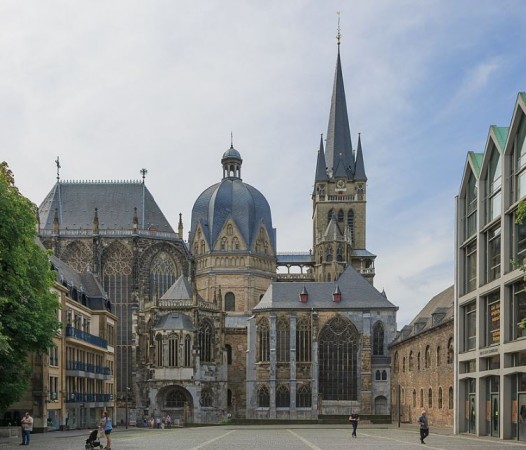
Aachen Cathedral is a Roman Catholic Church in Aachen, Germany. It is also known as Aachener Dom in German, is a magnificent and historically significant religious monument. It stands as a testament to the rich heritage and architectural prowess of the region. With its awe-inspiring structure and profound historical significance, Aachen Cathedral has rightfully earned its place as a UNESCO World Heritage Site and remains a symbol of Germany's cultural and religious identity.
The origins of Aachen Cathedral can be traced back to the reign of Charlemagne, the Frankish King who later became the first Holy Roman Emperor. Charlemagne sought to establish a capital for his vast empire and chose Aachen as its center in the late 8th century. The construction of the cathedral commenced in 796 AD and continued for several decades. The cathedral was consecrated in 805 AD, marking the beginning of its long and storied history.
Also read: The Serenity of Seychelles: Secluded Beaches and Island Adventures
Aachen Cathedral represents an exceptional blend of various architectural styles, reflecting its extended construction period and influence of different eras. The core of the cathedral is an exquisite example of Carolingian architecture, featuring elements of both Roman and Byzantine styles. The Palatine Chapel, the most significant part of the cathedral, is a central octagon with a soaring dome that exhibits the Byzantine architectural influence.
Over the centuries, the cathedral underwent several additions and renovations. During the Gothic era, in the 14th century, significant additions were made, including the choir and the impressive stained glass windows, which bathed the interior in a mesmerizing spectrum of colors. These Gothic elements harmoniously coexist with the earlier Carolingian structure, giving the cathedral a unique and captivating appearance.
Also read: Saarland: A Hidden Gem of Germany
One of the most treasured aspects of Aachen Cathedral is its impressive treasury. It houses an extensive collection of sacred artifacts and relics, many of which date back to the time of Charlemagne. Among the most revered items is the Aachen Gospels, an illuminated manuscript that showcases the exceptional craftsmanship of the Carolingian period. The cathedral's treasury also houses the Cross of Lothair, a precious relic believed to contain a piece of the True Cross.
Aachen Cathedral holds great historical significance as the place where German kings were once crowned. For over six centuries, from 936 to 1531, it served as the preferred location for coronation ceremonies of the Holy Roman Emperors. This tradition started with the crowning of King Otto I in 936 and solidified the cathedral's position as one of the most important religious and political centers of medieval Europe.
Also read: Brandenburg: A Historical and Cultural Gem in Germany
Throughout the middle Ages, Aachen Cathedral became a popular pilgrimage destination, drawing thousands of pilgrims from all over Europe. The main attraction for these pilgrims was the revered relic of the seamless robe of Jesus Christ, believed to have been brought to Aachen by Charlemagne himself. The robe was said to possess miraculous healing powers and attracted numerous faithful seeking cures for their ailments and solace for their souls.
Aachen Cathedral has survived numerous challenges and threats throughout its existence. It withstood fires, invasions, and various conflicts, including the French Revolutionary Wars. In the 19th century, the Prussian authorities took over its custodianship and initiated extensive restoration efforts to preserve this valuable cultural heritage. Despite the ravages of time and war, Aachen Cathedral has persevered, with its iconic features and historical treasures largely intact.
In recognition of its exceptional cultural value, Aachen Cathedral was inscribed as a UNESCO World Heritage Site in 1978. The cathedral's inscription underlines its importance in terms of historical, architectural, and religious significance, as well as its role in shaping European history and heritage.
Also read: Adventure in New Zealand's South Island: Queenstown, Milford Sound, and Glacier Country
Aachen Cathedral stands as a symbol of continuity and resilience, bearing witness to over a millennium of German history and culture. Its unique blend of architectural styles, from Carolingian and Gothic to Romanesque, showcases the evolving artistic and religious expressions of different eras. As a cherished UNESCO World Heritage Site and a place of historical coronations and pilgrimage, Aachen Cathedral remains a captivating destination for travelers and history enthusiasts’ alike, inviting visitors to immerse themselves in the grandeur of the past and marvel at the ingenuity of human achievement.
Also read: Exploring the Timeless Beauty and Rich History of Rome